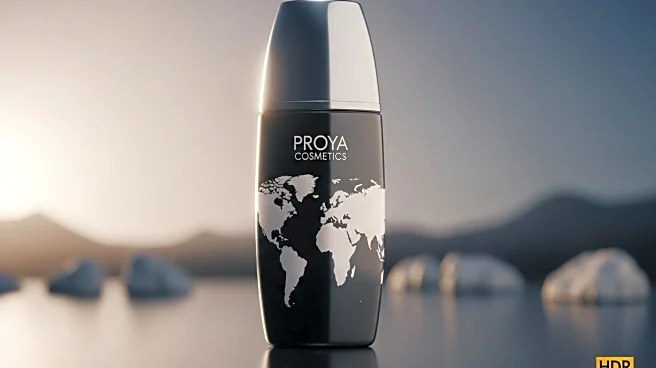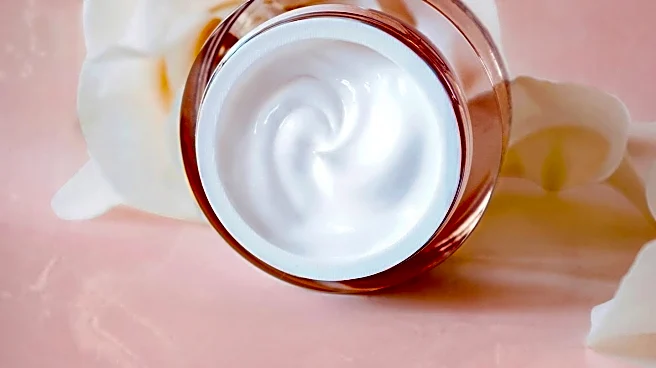What's Happening?
The beauty industry is projected to experience a steady growth rate of 4% annually, according to Jefferies. This growth is attributed to a balanced increase in both volume and price, driven by a growing consumer base with disposable income. However, the industry faces challenges as consumer spending shifts towards injectable cosmetics and weight loss drugs, which are slowly eroding the market share of traditional beauty products like creams and cosmetics. The report highlights that the beauty market's growth is becoming more complex due to changing consumer preferences and economic factors, such as a slowdown in China and shifts in duty-free shopping dynamics. Additionally, Unilever's well-being products, including Liquid I.V. and Nutrafol, have shown strong growth, indicating a consumer trend towards health and wellness products.
Why It's Important?
The shift in consumer spending towards injectables and wellness products signifies a broader change in the beauty industry's landscape. This trend could impact traditional beauty companies, potentially leading to a reevaluation of their market strategies. As consumers prioritize health and wellness, companies like Unilever that offer well-being products may gain a competitive edge. The steady growth rate of 4% suggests that while the industry remains stable, companies must adapt to changing consumer demands to maintain their market position. The rise of injectables, with an expected growth rate of 11%, highlights a significant opportunity for companies in this sub-category, although it may come at the expense of traditional beauty products.
What's Next?
As the beauty industry navigates these changes, companies may need to innovate and diversify their product offerings to capture emerging market segments. Traditional beauty brands might explore partnerships or acquisitions in the wellness and injectables space to remain competitive. Additionally, companies will likely focus on expanding their consumer base by targeting new demographics and regions. The industry may also see increased investment in research and development to create products that align with consumer preferences for health and wellness. Monitoring consumer trends and economic factors will be crucial for companies to adapt and thrive in this evolving market.










